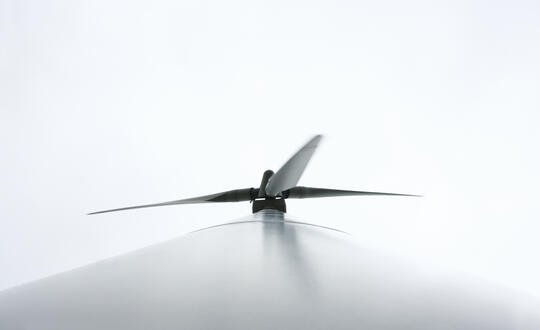
The London Array is one of the world’s leading offshore wind farms with 175 Siemens 3.6MW wind turbines with a combined capacity of 630MW. The development is a Round 2 offshore wind farm located 20 kilometres off the Kent coast in the outer Thames Estuary.
It was the largest offshore wind farm in the world until the Walney Extension reached full production in September 2018. As one of the world’s leading offshore wind farms, its conception and construction attracted international attention and paved the way for even larger wind farms being built around Britain’s coastline.
Arranged in rows and columns aligned according to the prevailing south-westerly wind, they are placed 650m to 1,200m apart and cover an area of 100sq km. Each turbine’s hub is 87m above sea level, and to the tip of the blade at its highest point is around 147m, taller than the London Eye. With a diameter of 120m, the blades have a swept area of 11,300m2 – one and a half times the size of Wembley Stadium’s football pitch.
London Array’s transmission assets are owned by a consortium known as Blue Transmission London Array Limited. These were purchased in September 2013 in accordance with Ofgem’s Offshore Transmission Owner (OFTO) regime.
Womble Bond Dickinson was instructed to:
- Secure consents via Section 36 Electricity Act
- Secure onshore planning permission for the substation
- Secure a works licence from Port of London Authority
- Pursue separate onshore Compulsory Purchase Orders
- Offshore transmission related advice.
This was the first major offshore wind project on which impacts on marine birdlife became a significant issue, after a wintering colony of red-throated divers was discovered in the Thames Estuary. The site was declared a protected European site, and to secure consent the project had to demonstrate that the displacement effects would not have an adverse effect on the integrity of the European site. The second phase of the project was unable to proceed because of this perceived impact.
Even without phase two, this was a major flagship project consented under the Section 36 Electricity Act regime (since replaced in England by the Development Consent Order regime under the Planning Act 2008).
It was seen as a major confidence boost for the offshore wind industry that a project of this size could be consented; it was the biggest by some distance at the time.
Not only was it necessary to satisfy the test of no adverse effects under the Habitats Regulations in respect of red-throated diver in order to secure Section 36 consent. It was also necessary to gain planning permission on appeal for the onshore substation providing a detailed design brief to minimise visual impacts on users of the coastal footpath at Cleve Hill in Kent.
Key facts and figures
Construction cost:
offshore substations
onshore substation
Generates enough clean electricity to power around
UK homes
A reduction of harmful CO² emissions by around
tonnes per year








